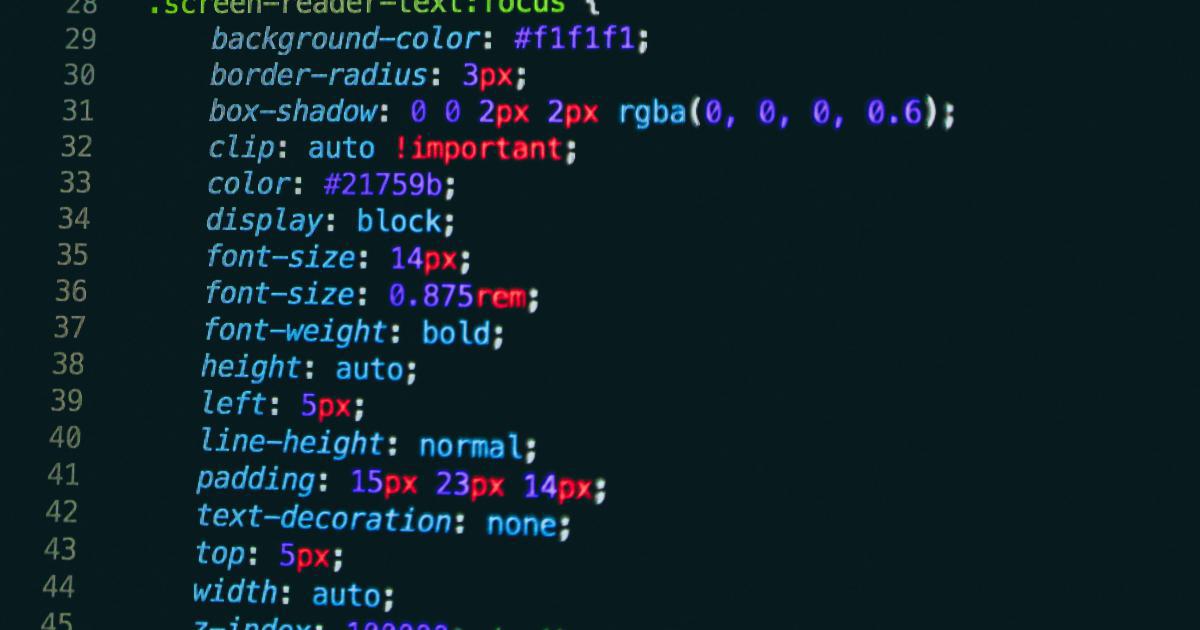The Ultimate Guide to URL Parameter Handling


Introduction to URL Parameters
In the world of web development, URL parameters play a crucial role in enhancing the functionality and user experience of websites and web applications. URL parameters are the key-value pairs appended to the end of a URL, separated by the ? symbol and subsequent parameter-value pairs are separated by the & symbol. These parameters allow developers to pass data between web pages, enabling dynamic content, personalization, and advanced functionalities.

URL parameters are widely used in various scenarios, such as:
Search Queries: When users perform a search on a website, the search terms are often passed as URL parameters, allowing the site to retrieve and display the relevant results.
Filtering and Sorting: E-commerce websites commonly use URL parameters to allow users to filter and sort products based on various criteria, such as price, category, or brand.
Pagination: URL parameters are used to indicate the current page number in a paginated list, enabling the site to load the appropriate content.
Tracking and Analytics: URL parameters can be used to track user behavior and activity, such as referral sources, campaign tracking, and user interactions.
User Preferences and Settings: Websites may use URL parameters to store and retrieve user preferences, such as theme, language, or personalization settings.
Understanding how to effectively handle and manage URL parameters is crucial for web developers, as it directly impacts the user experience, search engine optimization (SEO), and the overall functionality of a website or web application.
The Importance of URL Parameter Handling
Proper URL parameter handling is essential for the following reasons:
1. User Experience
URL parameters can significantly influence the user experience of a website or web application. Well-designed and intuitive URL parameters can enhance navigation, improve discoverability, and provide a seamless experience for users. Conversely, poorly handled URL parameters can lead to confusion, frustration, and a suboptimal user journey.
2. Search Engine Optimization (SEO)
URL parameters can have a significant impact on SEO, as search engines use the information in the URL to understand the content and context of a webpage. Properly managing URL parameters can improve the indexability and visibility of your website in search engine results, ultimately driving more organic traffic.
3. Data Consistency and Integrity
Effective URL parameter handling ensures data consistency and integrity, preventing issues such as duplicate content, broken links, and inconsistent user experiences across different pages or sessions.
4. Scalability and Maintainability
As websites and web applications grow in complexity, managing URL parameters becomes increasingly important. Implementing a robust and scalable approach to URL parameter handling can simplify future development, reduce technical debt, and enhance the overall maintainability of the codebase.
5. Security and Privacy
Improper URL parameter handling can potentially expose sensitive information or introduce security vulnerabilities, such as cross-site scripting (XSS) or SQL injection attacks. Implementing best practices for URL parameter handling is crucial for ensuring the security and privacy of user data.
Best Practices for URL Parameter Handling
To effectively handle URL parameters and maximize their benefits, web developers should follow these best practices:
1. Understand URL Parameter Syntax and Structure
Begin by familiarizing yourself with the basic syntax and structure of URL parameters. This includes understanding the use of the ? and & symbols, the key-value pair format, and the proper encoding of parameter values.

2. Implement a Consistent Naming Convention
Establish a clear and consistent naming convention for your URL parameters. This helps maintain readability, makes the parameters more intuitive for users and developers, and improves overall maintainability.
Consider the following guidelines when naming your URL parameters:
- Use descriptive, semantic names that convey the purpose of the parameter.
- Avoid ambiguous or vague names like
param1,param2, etc. - Use lowercase letters and separate words with underscores (
_) or hyphens (-). - Keep parameter names concise, but still meaningful.
- Ensure parameter names are unique and do not conflict with each other.
3. Validate and Sanitize URL Parameters
Proper validation and sanitization of URL parameters are crucial for maintaining data integrity and ensuring security. This involves the following steps:
Validate Parameter Existence: Ensure that required parameters are present in the URL before processing them.
Validate Parameter Type and Format: Verify that the parameter values are of the expected data type (e.g., integer, string) and conform to the expected format.
Sanitize Parameter Values: Remove or escape any potentially malicious characters or code snippets to prevent security vulnerabilities like SQL injection or cross-site scripting (XSS) attacks.

4. Leverage URL Parameter Normalization
URL parameter normalization is the process of standardizing the order and format of URL parameters to ensure consistency and improve SEO. This involves the following steps:
Maintain a Consistent Parameter Order: Arrange the parameters in a specific order, either alphabetically or based on their importance.
Remove Unnecessary Parameters: Identify and remove any redundant or unused parameters from the URL.
Encode Parameter Values: Ensure that all parameter values are properly encoded to avoid issues with special characters or spaces.
By normalizing your URL parameters, you can improve the readability and consistency of your URLs, which can have a positive impact on SEO and user experience.

5. Implement Robust Caching Strategies
Caching is an important consideration when handling URL parameters, as it can significantly improve the performance and responsiveness of your web application. Develop a comprehensive caching strategy that takes into account the following factors:
Parameter-Specific Caching: Implement caching mechanisms that account for the specific parameters in the URL, ensuring that the correct content is served to users.
Cache Expiration: Determine appropriate cache expiration times based on the nature of the content and the frequency of updates.
Cache Invalidation: Implement a robust cache invalidation system to ensure that changes to the underlying data are properly reflected in the cached responses.

6. Optimize for Search Engine Crawlers
Search engine optimization (SEO) is a critical consideration when handling URL parameters. Ensure that your URL parameters are optimized for search engine crawlers by following these best practices:
Minimize the Number of Parameters: Limit the number of parameters in your URLs to avoid potential indexing issues or parameter explosion.
Use Descriptive Parameter Names: Choose parameter names that are meaningful and provide context about the content of the page.
Implement Canonical URLs: Use canonical URLs to specify the preferred version of a page, especially when multiple URL variations exist due to parameters.
Leverage URL Rewriting: Consider implementing URL rewriting to create more SEO-friendly URLs that hide complex parameter structures.

7. Handle Parameter Changes and Versioning
As your web application evolves, you may need to introduce changes to your URL parameters, such as adding, removing, or modifying them. Develop a clear strategy for managing these changes to ensure a smooth transition and maintain data consistency.
Versioning: Implement a versioning system for your URL parameters, allowing you to introduce changes gradually and maintain compatibility with existing links and bookmarks.
Backward Compatibility: Ensure that your application can handle both the new and old parameter formats, providing a seamless experience for users.
Graceful Degradation: If a parameter is removed or modified, gracefully degrade the functionality and provide alternative options or fallbacks for users.

8. Monitor and Analyze URL Parameter Usage
Continuously monitor and analyze the usage of your URL parameters to identify patterns, trends, and potential areas for optimization. This can involve the following steps:
Logging and Reporting: Implement a logging system to capture and analyze the usage of your URL parameters, including frequency, user behavior, and any issues or errors.
Analytics and Dashboards: Integrate your URL parameter data with web analytics tools to gain deeper insights into user behavior and the impact of your parameter-driven features.
Optimization and Refinement: Use the insights gained from monitoring and analysis to refine your URL parameter handling, improve user experience, and enhance the overall performance of your web application.

Advanced URL Parameter Handling Techniques
While the best practices mentioned above cover the fundamental aspects of URL parameter handling, there are also several advanced techniques that can further enhance your web application's capabilities:
1. URL Parameter-Driven Routing
Utilizing URL parameters for routing can provide a more dynamic and flexible navigation experience for users. By mapping specific parameter values to corresponding application routes, you can create intuitive and user-friendly URLs that reflect the user's current context or state.

2. Server-Side URL Parameter Processing
For complex or resource-intensive operations, consider handling URL parameter processing on the server-side. This can involve tasks such as data retrieval, complex calculations, or integration with third-party services, which can be more efficiently managed on the server.

3. Client-Side URL Parameter Handling
In certain scenarios, it may be beneficial to handle URL parameters on the client-side, using JavaScript to parse, manipulate, and update the parameters dynamically. This can be particularly useful for enhancing user interactions, managing complex state changes, or implementing advanced filtering and sorting functionality.

4. URL Parameter-Driven State Management
Leveraging URL parameters as a means of managing application state can provide several benefits, such as improved user experience, easier debugging, and better sharability of application states. By synchronizing the URL parameters with the application's internal state, you can enable features like deep linking, bookmarking, and state restoration.

5. URL Parameter-Based Access Control
In scenarios where certain content or functionality should be restricted based on user permissions or other access control criteria, URL parameters can be used to enforce these restrictions. By validating and verifying the parameters, you can ensure that only authorized users can access the protected resources.

Conclusion
URL parameter handling is a crucial aspect of web development that directly impacts user experience, search engine optimization, data integrity, and overall application scalability. By following the best practices and embracing advanced techniques, web developers can harness the power of URL parameters to create more robust, efficient, and user-centric web applications.
Remember, effective URL parameter handling is not just about technical implementation; it also requires a deep understanding of user needs, business requirements, and the overall context of your web application. Continuously monitoring, analyzing, and refining your approach to URL parameter handling will help you deliver exceptional experiences and maintain a competitive edge in the dynamic world of web development.